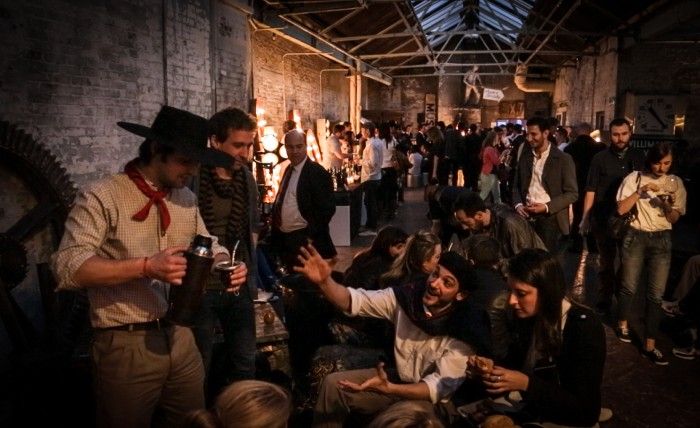What would you say have been the big advances in Argentine winemaking in the last 10 years?
Facundo Bonamaizon, agronomist, Chakana Winery

Facundo Bonamaizon, agronomist, Chakana Winery says Argentina is now all about making "authentic wines"
Argentina has taken great strides in terms of exploring and learning about new zones for winegrowing. This is the key factor affecting the quality of the wine. In terms of winemaking, we have developed a more ‘Argentine’ style, departing from standardised techniques of vinification in favour of creating authentic wines. We are achieving diversification and new levels of quality through the exploitation of different regions and micro regions, such as Paraje Altamira, Gualtallary, San Pablo, La Carrera, and new zones in the Calchaquies valleys and Costa Argentina and around Buenos Aires.
Juan Pablo Murgia, winemaker, Grupo Avinea (including Otronia and Bodega Argento).
I would say it’s been a revolution in many ways. Focusing on special places and recognising them in Geographical Indications. Working with precision viticulture to bring out the essence of every single terroir. On the winemaking side, we have understood the need to focus on techniques which respect the grapes and character of the land. We have improved a lot in terms of extraction, ageing, oak use and many other aspects which favour the expression of the different terroirs.
Juan Marcó, chief executive, Finca Decero
I would sum it up by saying we now have a key understanding and strong focus on terroir differences and micro terroirs. Learning from traditional regions and vineyards and exploring new ones; moving limits forward and beyond any previous limit. Winemakers now have the freedom and desire to produce wines which reflect key attributes from their origin. There has been massive improvement in the quality and character of white wines that are starting to reflect a sense of place.
José Alberto Zuccardi, director, Zuccardi Valle de Uco
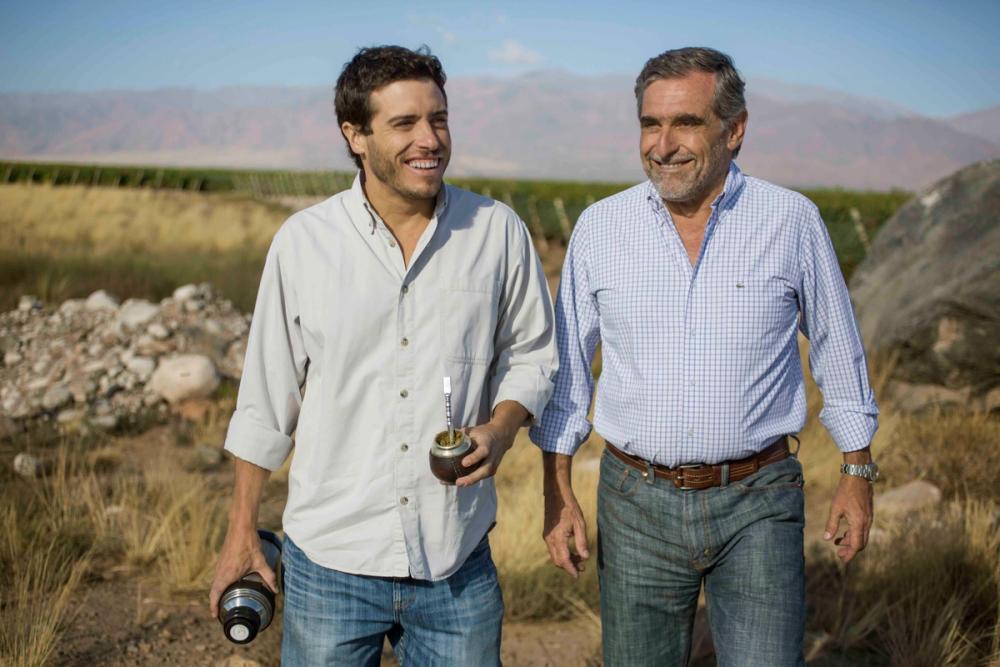
José Alberto Zuccardi and his son Sebastian are dedicated to better understanding the climate, soils and viticultural potential of new areas to grow vines and make wines all over Argentina
I believe the major advances in Argentine viticulture over the last 10 years are related to the deeper understanding of terroir and the identification of those great terroirs that are proving we can produce world-class wines. This has been supported by Malbec, a variety that has adapted very well to Argentina and allows us to produce wines with long ageing potential.
We also have a generation of agronomists and winemakers who have great knowledge and passion for what they do.
It is important to mention that Argentina is a major wine producer and consumer – wine is part of our culture and our diet. Immigrants brought the knowledge of viticulture and the tradition of consuming wine. In recent years, there has been significant evolution in the Argentine domestic market, as Argentine consumers appreciate quality and terroir-driven wines much more. I believe this is also a key factor in the significant advances of Argentine viticulture.
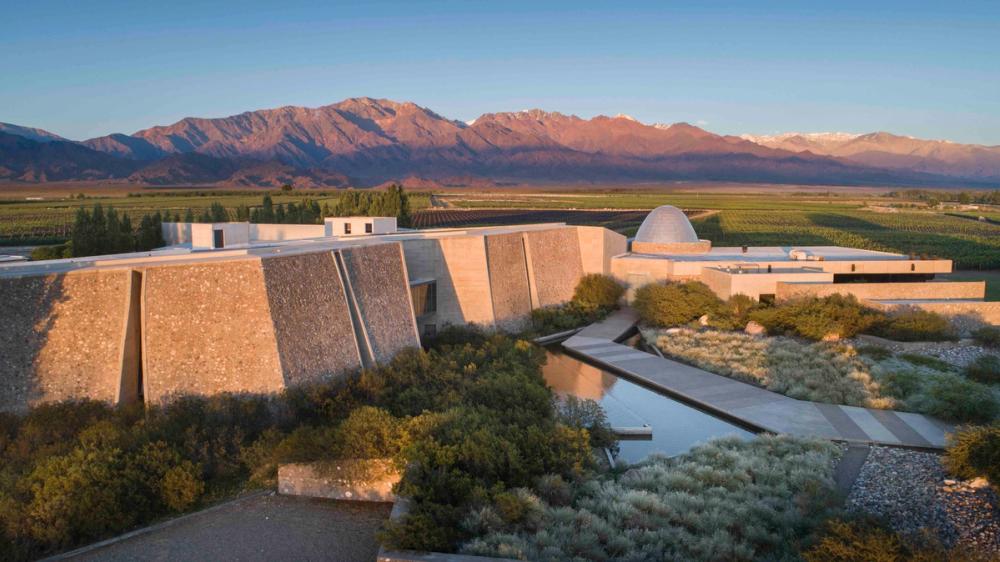
The Zuccardis have been at the forefront of pushing Argentine wines into new areas both physically and stylistically
Martín di Stefano, viticulturist, Zuccardi Valle de Uco
Without a doubt, the greatest advancements in winemaking and winegrowing in the last 10 years have been related to the exploration of the place and the valorisation of wine and viticulture linked to the place. Most producers have begun to orient their production towards a place-driven model: a focus on the place, the origin, the IG (Geographical Indication), not just a varietal. This is seen not only at the level of wine labels – as it is evident in marketing and communication – but also at the level of our work in the vineyards.
We have accumulated immense experience and knowledge in the last 10 or 15 years, with the discovery of new areas in the Uco Valley and higher altitude areas.
Laura Catena, managing director, Catena Zapata
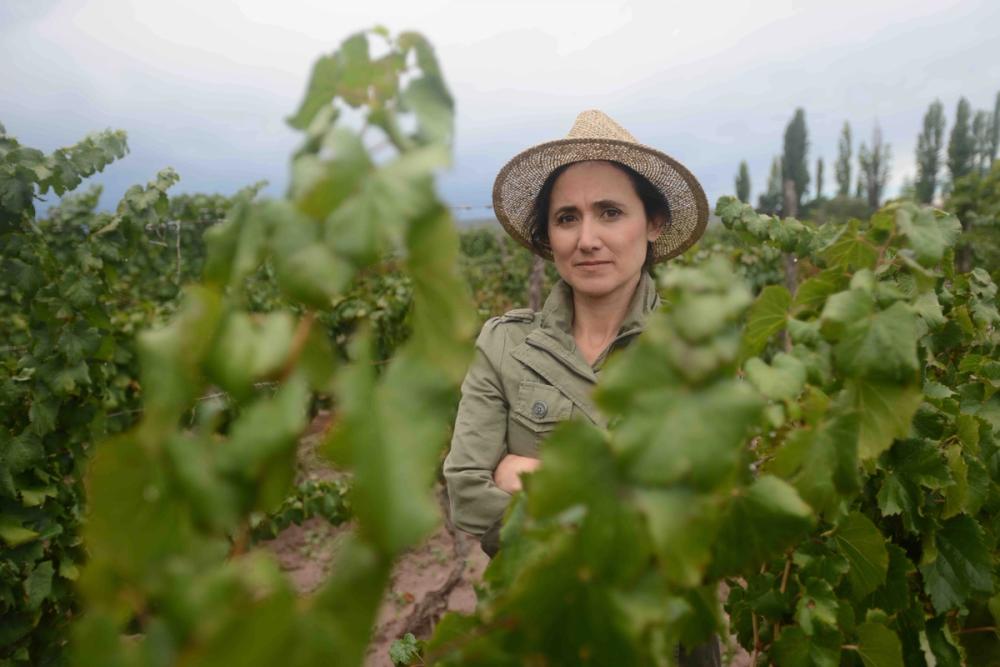
Laura Catena has been at the forefront of bringing a scientific, fact-based analysis to winemaking in Argentina
At the Catena Institute of Wine (founded in 1995) we have made great progress in confirming through science what we already knew, or intuited in our day-to-day winemaking (dating since 1902 when our family’s vines were first planted in Mendoza). This information is on the Catena Institute website - www.catenainstitute.com. I would summarise the advancements in seven main areas:
- In collaboration with terroir expert Greg Jones and local scientists, we (the Catena Institute) published in 2021 the definitive study on Malbec Terroir (24 sites, three years – this is the largest and longest terroir chemistry study ever done) showing that the chemical fingerprint of Argentine Malbec changes according to the vintage and to the site where it is grown. Find out more here.
- Previous work in collaboration with UC Davis had also studied the terroir fingerprint of Malbec in California and Argentina (the first study of its kind which included both chemical and sensory analysis) https://www.ajevonline.org/content/66/1/30.article-info, https://www.sciencedirect.com/science/article/abs/pii/S030881461500093X
- We recently published a study in collaboration with Professor Roger Boulton of UC Davis a study analysing Malbec from Argentina and California over five and seven years and showed the site discrimination remained over time for Malbec an indication that it is age-worthy. You can read more here: https://www.ajevonline.org/content/74/1/0740019 and https://pubmed.ncbi.nlm.nih.gov/30100411/

Catena Zapata has driven winemaking and viticulture in Argentina by using scientific analysis at its world-leading Catena Institute of research and development
- We recently started doing tastings of old vintages of Malbec and Chardonnay dating back to the 1990’s and demonstrating that the wines have aged particularly well.We have begun releases of 20-year-old wines with 2004 Nicolás Catena Zapata and 2004 Catena Zapata Malbec Argentino.
- The study of soil has become much more advanced in the last two decades for us starting in the early 2000’s.We now have detailed mapping of our vineyards that allow us to farm parcels differently and to keep them separate at the time of vinification. This is how our most awarded and collected Adrianna Vineyard and Nicolás Catena Zapata wines were born.
- We have also worked on studying the microbiome of the vineyard soil and have found differences in microbial composition at different altitudes and within different soil types.These studies have not been published yet.
- Old Vines, ungrafted vines, preserving genetic diversity. Approximately 89% of Argentina’s vineyards are massal, ungrafted vines. Today there is a big movement in Europe to plant massals in Italy (Gaja) and Bordeaux/Burgundy (many of the grands crus) but few people know that Argentina is mostly planted with massales (over 150 thousand hectares).Many of these vineyards were planted in the last 10 decades and some will require replanting. Given the presence of viruses, it will be very tempting to replant with grafted clones.
- (Old vines continued) At Catena in two vine nurseries we are preserving our own and grower vineyard massals of Malbec, Cabernet Sauvignon, Chardonnay, Bonarda, Petit Verdot, Syrah, Criollas because once a massal doesn’t get replanted its genetic diversity is lost. These genetically diverse populations of some popular varieties might hold the key to climate change adaptation and adaptation to vineyard threats (some of the cuttings ripen later). We need to be conscious that for some leading varieties such as Cabernet Sauvignon most commercial vineyards in the world (outside of Argentina) are planted with just a few clones. I received the Old Vine Hero Award in 2023 for my work with old vines in Argentina and preserving massal ungrafted vineyards. There are more people thinking about Old Vines and the cultural heritage that they represent which will hopefully prevent early replantings or even worse, vineyards being sold for housing real estate.
Daniel Pi, wine director,Bemberg Estate Wines
The bigger advances have been mostly in the synergy between winemaking and vine growing. Looking for the best expression of the place. We are focused on the land looking for the best parcels and soils. As we grow our vineyards on alluvial soils, we have a lot of heterogeneity end we find different type of soils in the same vineyard. A lot of work has been done with the help of edaphologists and geologists. Tools like satellite NDVI, soil conductivity are used for pit digging and soil mapping to identify different spots.
Juliana Bevilacqua, winemaker and winery manager, Bemberg Estate
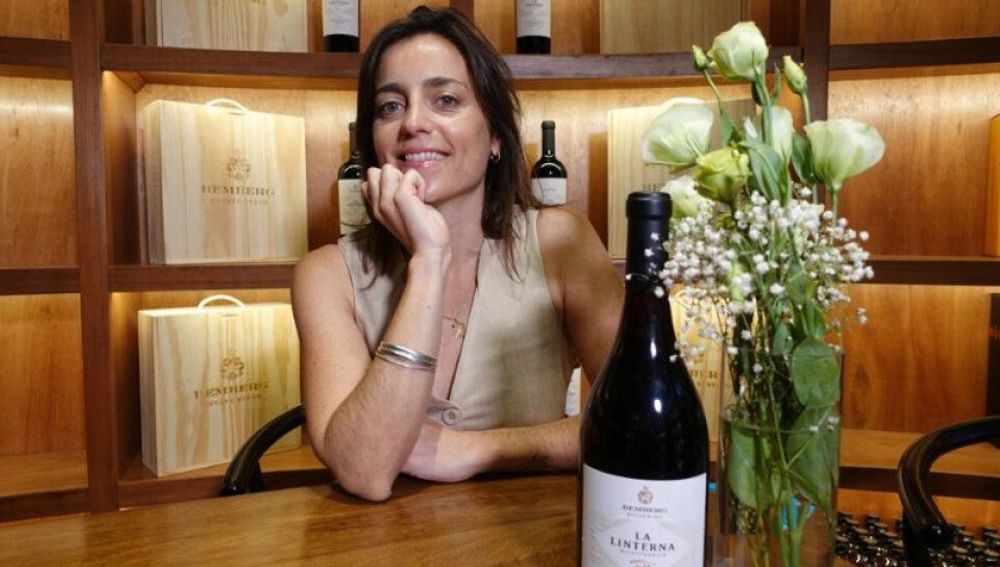
Juliana Bevilacqua, winemaker at the Bemberg Estate, says investing in machinery and technology has also helped the Argentine wine industry
As regards winegrowing, mechanisation of labour has meant an improvement in the way soils and vines are managed, with the implementation of tools that are gentler with both soils (protecting the organic matter and avoiding mineralisation) and with plants as well.
Regarding the winery, there has been improvement in the machinery in general, with DE stemmers that treat the grapes more gently, presses that use less pressure and pumps that incorporate 0ppm of oxygen into wine when it is racked. At Bemberg Estate Wines, for instance, we have the Willmess Press Sigma 4, which due to its draining system through channels in the centre, increases the surface of contact exerting less pressure. Hence, the elegancy we achieve in pressed whites.
There is also more research and studies conducted to understand the terroir, with winemakers and agronomists from different wineries cooperating and working together to make better wines. Some wineries have part of their budget allocated to research and investigation.
There has been a big focus on making wines that are true to the place where they are from. Where and how do you think Argentina is in achieving this?
Facundo Bonamaizon, Chakana Winery
Argentina is very lucky to have many new zones of production and we have learnt very quickly how the wines have very different expression in these zones when we use the right combination of grape varieties and minimal technical intervention. Some wineries are focusing on the diversity of the wines and using methods such as early harvesting to maintain their true expression. The adoption of organic and biodynamic practices is fundamental to the concept of true terroir.
Juan Pablo Murgia, Grupo Avinea
Some Argentinian producers, including myself, have been working very hard in that direction. The greatest wines in the world are those that express the character of place, those that can transport you to that place through the sensorial experience of tasting the wines.
Juan Marcó, Finca Decero

Juan Marcó, Finca Decero, says better site specific analysis is helping it make better quality white wines too
We have been doing this for years at Decero. A good example is our Decero Mini Ediciones tier. From a single vineyard approach, we have move forward to ‘small polygons’ of unique attributes within our Petit Verdot, Cabernet Franc and Tannat blocks to give birth to these wines. In a broader perspective (Mendoza), white wines from high altitude and unique soil profiling are a clear example of what is going on.
Martín di Stefano, Zuccardi Valle de Uco
Where is Argentina achieving this focus on the place? Throughout the entire country. We see that new projects appearing all over the country have a strong sense of place. Think about Patagonia, vineyards in Trevelin, in very southern areas. Think about the north, where there is a process of identifying small valleys, no longer just Cafayate, we’re talking about Cachi, Tolombón, Molinos, more and more small areas are appearing. Think about San Juan, with the valorisation of areas in the valleys of the foothills like Calingasta or Pedernal. This goes far beyond the Uco Valley.
Our stony vineyards in Paraje Altamira, the new vineyards in San Pablo, the higher area of Gualtallary, the lower area of La Carrera and the higher area of Los Chacayes have all been developed in recent years. With technology, communications, the ability to travel and exchange information with producers around the world, what used to take 50 years or three generations now takes 10 years or five. These are key for Argentina to be able to demonstrate that we have the potential today to produce world-class wines with identity.
Laura Catena, Catena Zapata
We have done particularly well with Catena Appellation wines that have been called the “village” wines of Argentina – they are labelled according to the village they come from such as La Consulta, Vista Flores, Lunlunta, San Carlos, Agrelo.
The Catena Zapata Adrianna Vineyard Chardonnays – White Stones and White Bones and the Malbecs – Fortuna Terrae, River and Mundus Bacillus Terrae (the latter means elegant microbes of the earth and is named after the microbes we have identified in the parcel’s soil).
Daniel Pi, Bemberg Estate

Bemberg's Daniel Pi says site analysis has opened up new winemaking opportunities in areas such as the higher Andean valleys of San Juan, Pedernal, Zonda, Calingasta and in the Calchaqui valley.
We have been working on this over the last 15 to 20 years. At the beginning with the soil mapping of existing vineyards, and to develop the new ones. In the new developments from 2006 we did soil mapping before planting, so parcels have more uniform type of soils, more identity of the grapes.
In the case of Bemberg Estate Wines, we also used penetrometer to make a tri dimensional mapping. With all the info we get from satellite NDVI of the natural flora, soil conductivity and penetrometer depth mapping, we define not only the size and shape of the parcels, but also vine density. We are now in much better position to identify the best plots for our top-quality wines.
Most of this work has been done in the best new areas developed in the Uco Valley and some places in the higher Andean valleys of San Juan, Pedernal, Zonda, Calingasta and in the Calchaqui valley.
Juliana Bevilacqua, Bemberg Estate
I think this does not depend on places, but it is a matter of philosophy. I personally see it widely across the country, carried on by those winemakers who have the philosophy andwho can also afford it. Here in Gualtallary, we find differences by moving just 100 meters away.
If we think of the “how”, in my opinion the only way of achieving this is by an approach of low intervention. This may involve, for instance, using native yeasts instead of commercial, choosing bigger barrels with light toasts that reduce the surface of oak in contact with the wine and helps integrating the oak instead of it taking over the wine. All in all, I think the only way of achieving it is by “adding less stuff”, and by working with small batches that allows us to compare year after year the same plot and stabilising parameters that define it.
Do you see different varieties being planted and more diversity in terms of the grapes being used?
Facundo Bonamaizon, Chakana Winery
There is more diversity, but I don’t think it’s the most relevant factor. We look for diversity amongst the classic varieties - Malbec, Cabernet sauvignon, etc. We identify very specific massal selections and combine them within new winegrowing zones. Malbec has the most genetic diversity and therefore offers the greatest potential to adapt and produce different styles of wine in a natural way.
Juan Pablo Murgia, Grupo Avinea
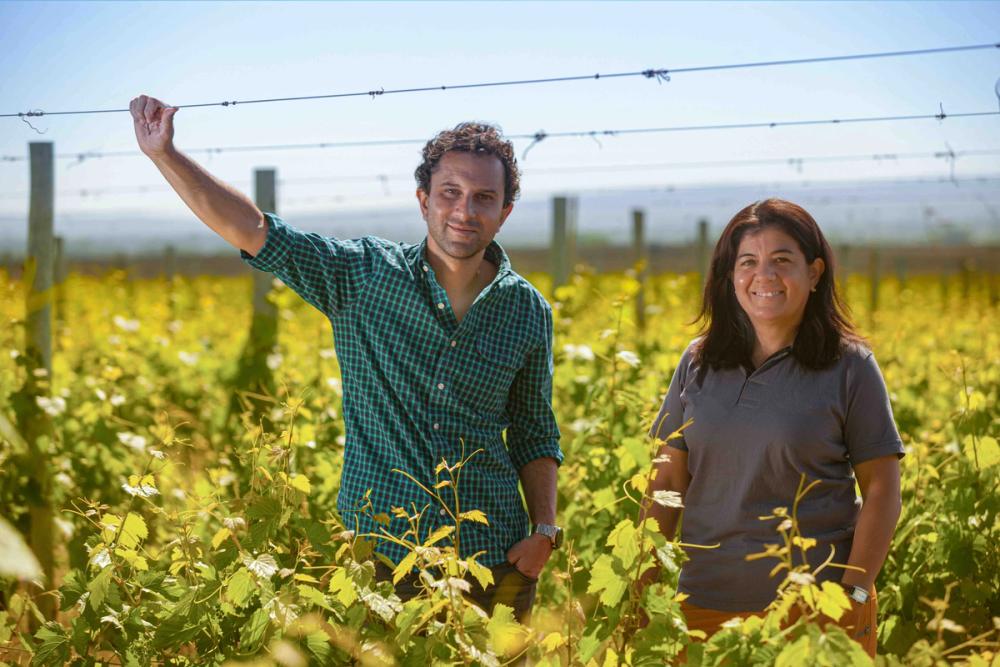
Juan Pablo Murgia and Cecilia Acosta of Grupo Avinea
We are still depending too much on Malbec. That’s something we need to work hard on. Cabernet Franc has been showing a great character in Argentina, especially in high altitude places like Alto Agrelo where Argento vineyards are. But Pinot Noir and Chardonnay have a great opportunity too especially in places like Patagonia. We are demonstrating in Otronia Vineyard that Patagonia may be one of the best terroirs for Chardonnay and Pinot Noir in the world.
Martín di Stefano, Zuccardi Valle de Uco
I don’t see a revolution in varieties because Argentina has a smaller base of varieties than other countries – this is not Spain or Portugal or Greece where there are hundreds of ancient and native varieties – we have the classics that came here through immigration.
We do have Malbec which is very well adapted to our environment and allows us to express the diversity of our places using just one type of grape. Cabernet Franc is the new player that has appeared in recent years, there is Bonarda which is having a comeback, there is Semillon which is being rediscovered, and there is great work with Criolla grapes.
Beyond the classic varietals, we have Chardonnay, Sauvignon Blanc, Cabernet Sauvignon, and even some Pinot Noir. The diversity will come from the places, the diversity will come when we make Malbec from different sites, Malbec from Gualtallary, from Vista Flores, from La Consulta, from Los Chacayes, from Altamira, from Luján de Cuyo, and from Río Negro, that is the diversity.
And then the same can be applied to Chardonnay, Sauvignon Blanc, Cabernet Franc. That’s the ripple effect that the place has on the varieties.
Laura Catena, Catena Zapata
Malbec is still our dominant export variety and this makes sense because Malbec is extremely well adapted to our mountain climate and makes different kinds of wines – riper, fruitier, floral, dense, elegant, mineral – according to where it is grown, from Patagonia to the North of Argentina, a span of about 1,000 miles.Because of our very strong and interested domestic market, we have never stopped making many blends and less known outside of Argentina wines.There is a growing interest in whites as well.
Reds: Cabernet Franc, Bonarda, blend of Cabernet and Malbec, blend of Malbec, Bonarda and Petit Verdot (our equivalent to the Bordeaux Blend), Garnacha.
Whites: High Mountain Chardonnay from limestone soils, Semillon, Chenin Blanc, Semillon-Chenin, Torrontes
Rosé: Rosé of Malbec, rosé of Garnacha, blends of reds and whites, rosé of Criolla
Daniel Pi, Bemberg Estate
Due to the “Malbec Fever” we have seen an increase of the surface planted with Malbec in the last 20 years from 20,000 hectares to 47,000 hectares. Over the same period Cabernet Franc has grown from 700 hectares to over 2,500 hectares. There has been a decrease in the plantings of Syrah, Chardonnay and Cabernet Sauvignon, and now we are suffering the lack of these grapes.
In the cooler Atlantic areas near the Ocean, white grapes as Albariño and Glera have been planted. I foresee some increase in the plantings of some of the Rhone grapes and Grenache.
* In part two of our Argentina analysis to be published later this week we talk to our panel of leading wine figures to assess what steps they are taking to address sustainability and climate change and what hopes they have for the country's exports around the world.



